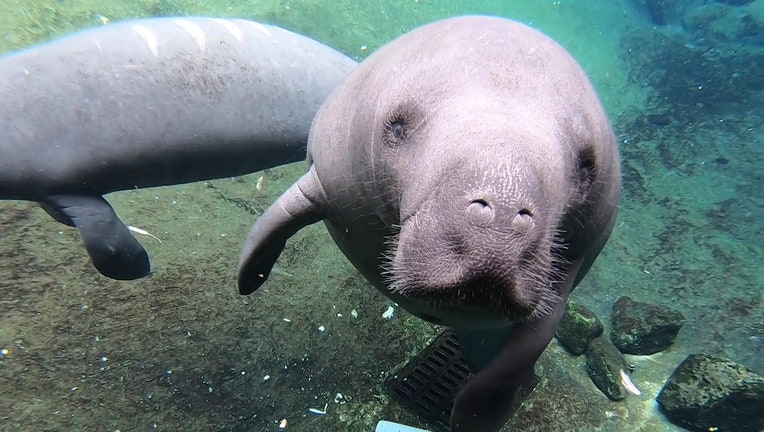

They are remnants of a time when manatees lived on land.

The manatee has pelvic bones, but they are not attached to its skeletal frame and are fairly small.They make red blood cells in their sternum where marrow is found. The manatee's rib bones are solid, there is no marrow.As a result, manatees cannot turn their heads sideways they must turn their whole body around to look behind them. Most other mammals, including giraffes, have seven. Manatees have only six cervical (neck) vertebrae.This tooth replacement is an adaptation to the manatee's diet as manatees consume plants that often hold sand that can wear down its teeth. The front molars eventually fall out and are replaced by the teeth behind them. New teeth come in at the back of the jaw and move forward horizontally about a centimeter a month. A manatee's teeth (all molars) are constantly being replaced. Manatees have no "biting" teeth, only "grinding" teeth.The heart rate slows down to 30 beats a minute during a long dive. A manatee's heart beats at a rate of 50 to 60 beats a minute.Manatees can hear very well despite the absence of external ear lobes.Their eye muscles close in a circular motion, much like an aperture on a camera. Manatees do not have eyelids or eyelashes.These small hairs provide a tactile system or sense of touch to help manatees understand their surroundings through changes in water currents and pressure wakes. Stiff whiskers (vibrissae) grow around the mouth and very fine hairs are sparsely distributed over much of the body.The manatee uses its muscular prehensile upper lips much like an elephant (a distant relative of the manatee) uses the tip of its trunk to pick up items. This flexibility allowsthe manatee to "grab" aquatic plants and draw them into its mouth. A manatee can move each side of its lip pads independently.The ear openings, located just behind the eyes, are small and lack external lobes.A manatee’s small eyes have nictitating membranes that can be drawn over them for protection underwater but still allow the animal some sight.The nostrils, located on the upper surface of the bulbous blunt snout, close tightly when underwater.Florida Youth Conservation Centers Network.Great Florida Birding and Wildlife Trail.Report injured, orphaned or dead manatees.Report fish kills, wildlife emergencies, sightings, etc.


 0 kommentar(er)
0 kommentar(er)
